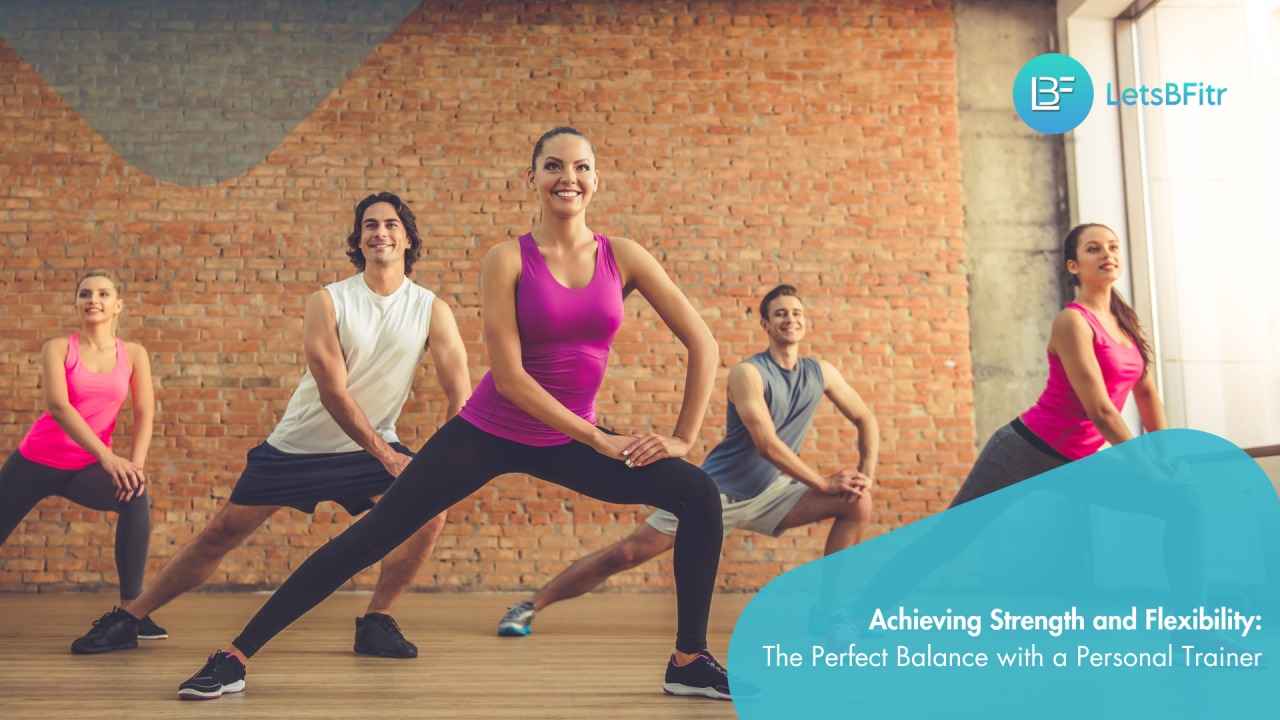
Combining Strength and Flexibility: The Best of Both Worlds with a Personal Trainer
2024-11-27 07:07:53
Strength and flexibility are often seen as two entities in pursuit of fitness. However, combining both can help in a well-rounded fitness preparation that promotes overall health and performance. Personal trainers play a crucial role in assisting clients to integrate strength training and flexibility exercises into their routines. This article discusses the importance of combining strength and flexibility and how a personal fitness trainer in Dubai can facilitate it.
A personal trainer designs customized exercises for strength and flexibility according to clients' fitness levels, diets, and lifestyles. So, it is essential to trust your trainer fully.
The Importance of Strength Training
Strength training provides many benefits, such as lowering the risk of chronic diseases and also reducing the risk of injury. Let’s look at a few other benefits of strength training:
1. Building Muscle
- Strength training is essential for muscle development, increasing metabolism, and enhancing functional strength for day-to-day activities.
- Advantages: Increased muscle mass improves body composition and metabolic rate.
2. Bone Health
- Heavy-weight exercises strengthen bones and reduce the risk of osteoporosis, particularly in older adults.
3. Improved Performance
- Stronger muscles enhance performance in sports and daily tasks, making movements more efficient.
The Importance of Flexibility Training
Stretching your muscles leads to a more fantastic range of motion and increased flexibility. Let’s look at a few reasons why flexibility training is essential:
1. Injury Prevention
- Flexibility exercises improve the range of motion in joints, reducing the risk of injuries during physical activities.
- Benefits: Greater flexibility enhances overall movement quality.
2. Enhanced Recovery
- Flexibility training promotes muscle recovery, reduces soreness, and improves overall athletic performance.
3. Stress Relief
- Stretching and flexibility exercises can alleviate tension and stress, contributing to mental well-being.
Integrating Strength and Flexibility in Training
Integrating both of these improves performance and reduces the risk of injury. Here are some ways to integrate these both:
1. Sample Workout Routine
A personal trainer can create a balanced workout routine with strength and flexibility exercises. Here's an example:
Warm-up (5-10 minutes):
- Do stretches before the workout to prepare the muscles.
Strength Training (20-30 minutes):
- Squats (3 sets of 10-12 reps)
- Push-ups (3 sets of 10-12 reps)
- Dumbbell Rows (3 sets of 10-12 reps)
Cool Down (15-20 minutes):
- Seated Forward Bend (hold for 30 seconds)
- Pigeon Pose (hold for 30 seconds on each side)
- Cat-Cow Stretch (10 repetitions)
2. Incorporating Yoga into Strength Training
- Personal trainers can incorporate yoga poses into strength workouts to improve flexibility and core strength.
Example Poses:
- Incorporating Downward Dog between sets of strength exercises to stretch and recover.
3. Using Foam Rolling
- Foam rolling is an effective way to improve flexibility and reduce muscle tightness. A fitness trainer will motivate and guide you on proper techniques.
Example Techniques:
- Rolling out the quads, hamstrings, and calves post-workout.
The Role of a Personal Trainer
1. Customization
- Personal trainers assess individual needs and create personalized programs that balance strength and flexibility based on goals and fitness levels.
2. Educating Clients
- Trainers educate clients on the benefits of strength and flexibility training, emphasizing the importance of a holistic approach to fitness.
3. Motivation and Accountability
Having a trainer keeps clients motivated and accountable, ensuring they incorporate both elements into their routines.
Conclusion
Combining strength and flexibility is vital for achieving overall fitness and wellness. With the guidance of a personal trainer, you can develop a balanced workout regimen that promotes muscle growth, enhances flexibility, and prevents injuries. Embrace the benefits of comprehensive and functional fitness programs by LetsBFitr and take the next step toward your goals with the support of a professional.
Frequently Asked Questions (FAQs)
Q1: Should you stretch before exercise?
A1: It is recommended to do stretching exercises before starting a workout. It allows you to warm up the muscles and be more pliable, reducing the risk of injury.
Q2: How long should you stretch?
A2: For optimal benefits, stretching for 10 to 30 seconds is recommended, ensuring you target all major muscles and help increase blood flow.
Q3: What are the few best flexibility exercises for athletes?

